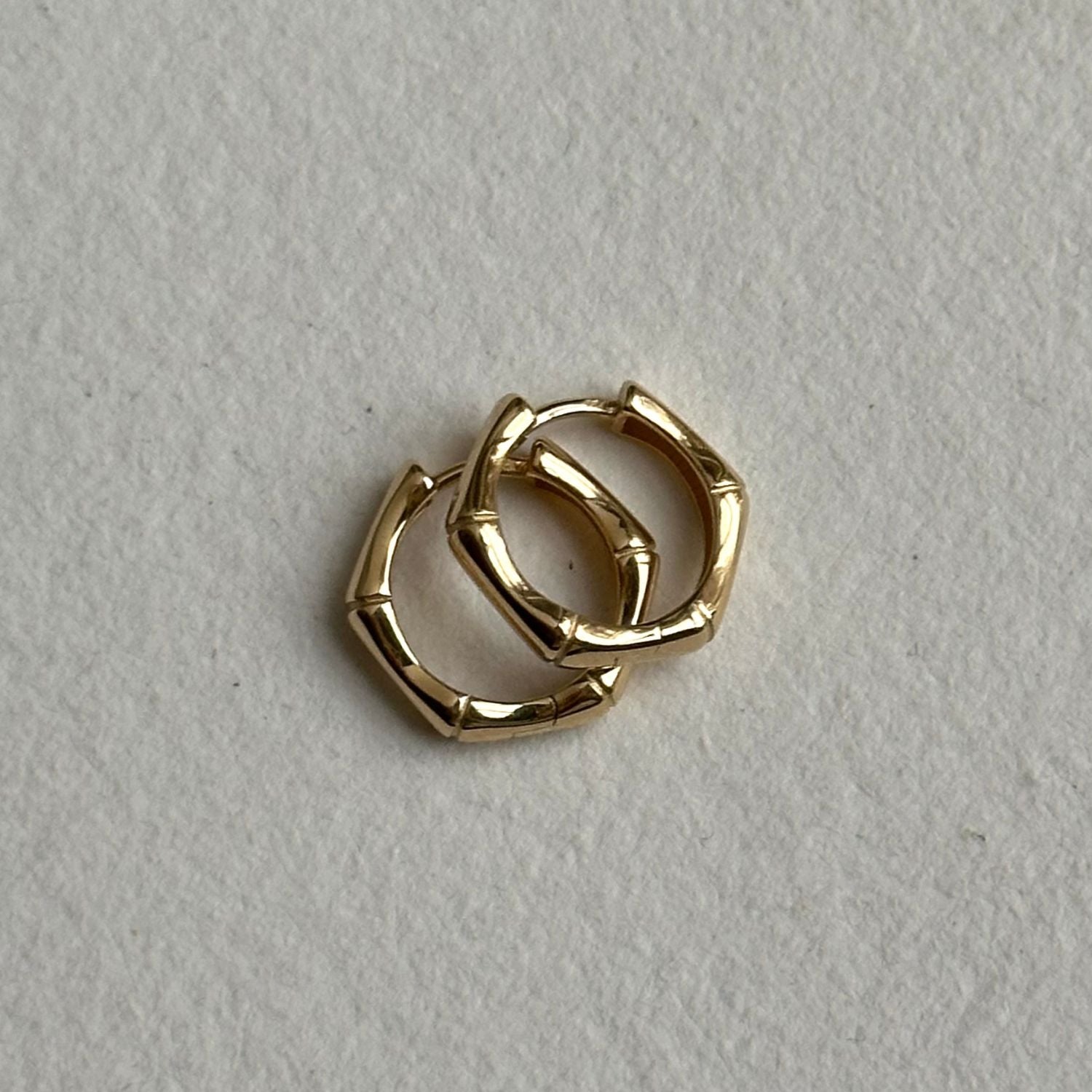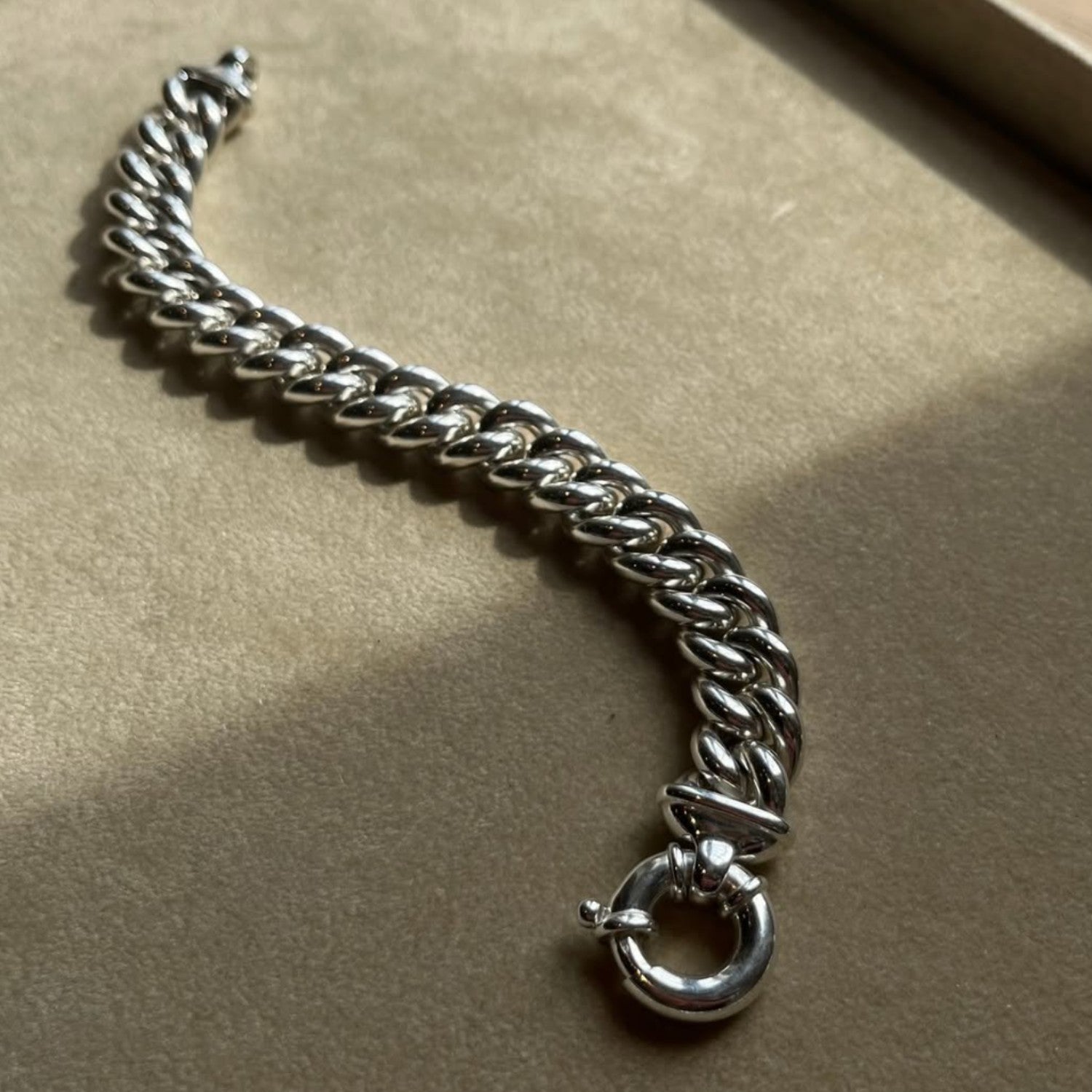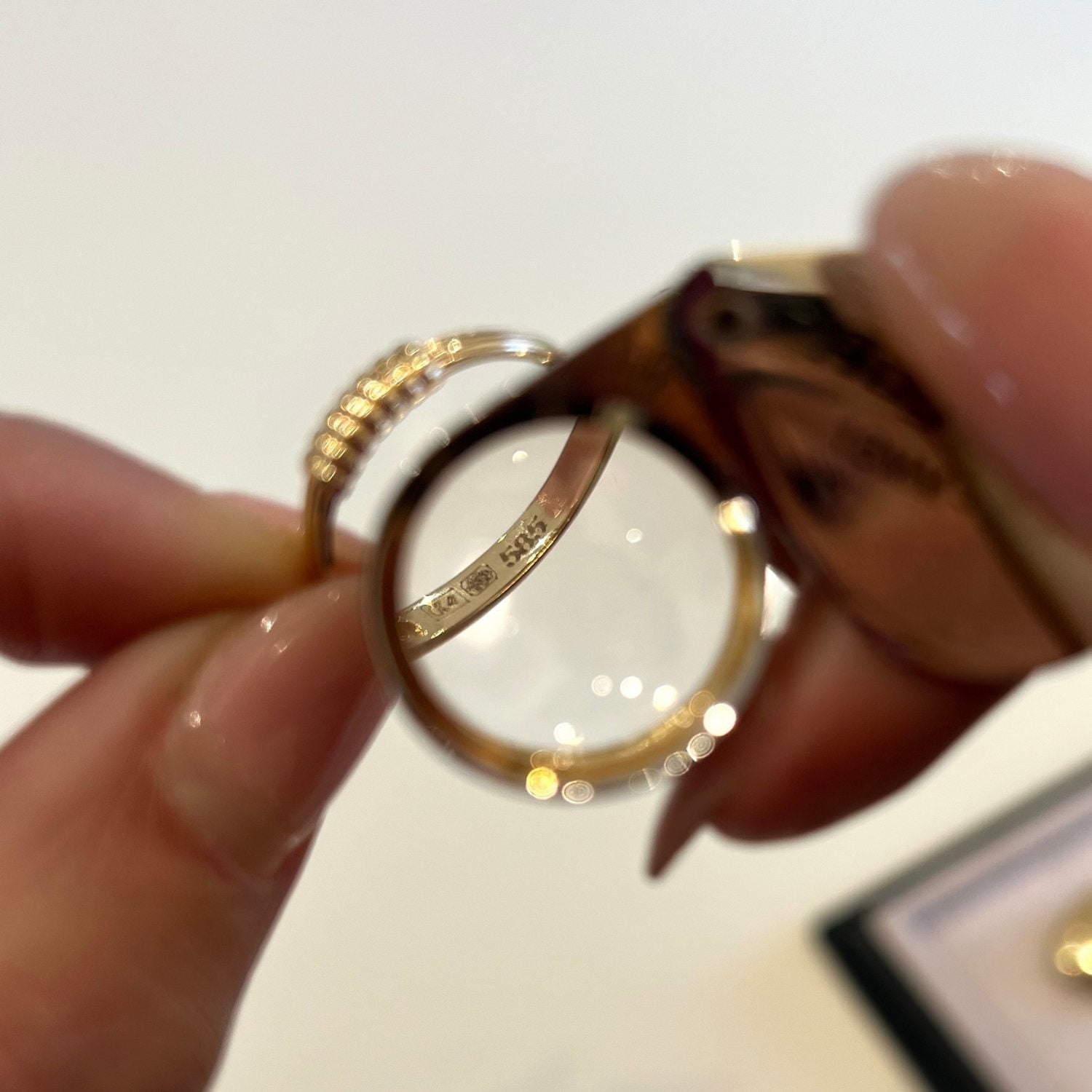You may have noticed a small inscription on your gold jewelry, such as 585 or 750. These markings are called gold stamps, but what exactly do they mean, and what do they tell us?
What is a gold stamp?
A gold stamp provides information about the purity of the gold. An official authority applies these stamps to jewelry made of genuine gold. These markings serve as a guarantee of the gold content.
The stamps consist of a three-digit number, which represents the percentage of pure gold in the jewelry. This is known as the karat of the gold. For example, a 750 stamp indicates 75% pure gold, which is equivalent to 18 karat.
How to identify real gold
Identifying a gold stamp is fairly simple. Look for a small inscription on the inside of a ring, the clasp of a necklace, or another subtle part of the jewelry. The stamp may be located in a hidden spot and is sometimes not visible to the naked eye. Using a magnifying glass can help you find it.
Various gold stamps and their karat equivalent:
- 333 – 8 karat gold
- 375 – 9 karat gold
- 417 – 10 karat gold
- 585 – 14 karat gold
- 750 – 18 karat gold
- 916 – 22 karat gold
The most common gold stamp in the Netherlands: 585
In the Netherlands, the most frequently used gold stamp is 585, which stands for 14 karat gold. This means the jewelry contains 58.5% pure gold. Since pure gold is a relatively soft metal, it is not suitable for everyday wear. Gold jewelry is therefore made with a mix of other metals, such as copper and silver, creating an alloy. This combination strengthens the jewelry, making it more resistant to wear and allowing you to enjoy it daily.
The Netherlands has strict regulations regarding gold stamps. Jewelry can only be classified as "gold" if it is at least 14 karat. In contrast, in the United Kingdom, jewelry can be considered gold from 9 karat. Our collection mainly consists of 14 karat gold jewelry, but some vintage pieces from the UK are 9 karat.
How to recognize 18 karat gold?
18 karat gold is an alloy containing 75% pure gold. You can recognize it by the 750 stamp or the 18k abbreviation. Since 18k gold has a higher pure gold content than 14k, it is typically more valuable.
18k gold, in general, also has a richer, warmer yellow hue compared to 9k or 14k. However, the exact color depends on the alloy. A higher copper content gives the gold a more red tone (as in rose gold), while more silver or palladium creates a softer hue (as in white gold).
How is a gold stamp applied?
Gold stamps are applied by an official authority. In the Netherlands, this is done by an assay office. It is mandatory for gold objects weighing at least one gram to be stamped. After production, a gold piece is first sent to the assay office, where its gold content is tested before the stamp is applied.
The stamp is imprinted using a special punch, carefully applied to avoid damage. For delicate jewelry, a laser engraving may be used instead.
Gold stamps in other countries
The hallmarking process varies across Europe, and imported gold is often re-assayed. For example, gold imported from Turkey undergoes a different certification process than gold in the Netherlands due to differences in regulations, control systems, and certification authorities.
White gold
White gold is an alloy of yellow gold mixed with metals like silver, palladium, or manganese. Unlike yellow gold, white gold does not occur naturally but is created through metal blending. White gold jewelry carries the same gold stamps as yellow gold and can be identified in the same way, for example, by looking for 585 or 750 stamps.
How to identify gold without a stamp?
If your jewelry does not have a visible gold stamp, how can you tell if it is real gold? A missing stamp does not necessarily mean the piece is not made of real gold. The marking may have worn away over time or might be absent because the jewelry was never officially certified.
One simple test is the magnet test. Gold is a non-magnetic metal, meaning that if you hold a magnet near your jewelry and it is attracted, it is likely not real gold. However, this method is not foolproof, as some other precious metals, such as platinum, are also non-magnetic.
For absolute certainty, it is best to have your jewelry checked by a goldsmith, who can confirm whether it is genuine gold.
At Oro Jewels, all gold jewelry is certified by the assay office and comes with an official gold stamp.





